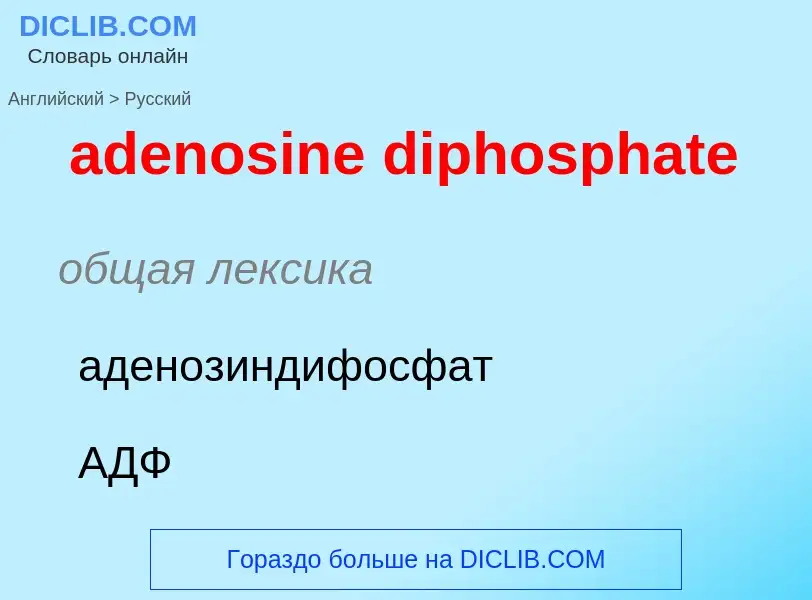Перевод и анализ слов искусственным интеллектом ChatGPT
На этой странице Вы можете получить подробный анализ слова или словосочетания, произведенный с помощью лучшей на сегодняшний день технологии искусственного интеллекта:
- как употребляется слово
- частота употребления
- используется оно чаще в устной или письменной речи
- варианты перевода слова
- примеры употребления (несколько фраз с переводом)
- этимология
adenosine diphosphate - перевод на русский
общая лексика
аденозиндифосфат
АДФ
медицина
аденозиндезаминаза
общая лексика
аденозинмонофосфат
АМФ
медицина
аденинмононуклеотид
общая лексика
адениловая [аденозинмонофосфорная] кислота
АМФ
химия
аденозинмонофосфорная кислота
медицина
аденозинфосфат
медицина
аденинмононуклеотид
аденозинмонофосфат
медицина
аденозиновый рецептор
общая лексика
аденозинтрифосфорная кислота
АТФ
медицина
аденозинтрифосфат
общая лексика
аденозинтрифосфат
АТФ
устаревшее выражение
аденилпирофосфат
медицина
аденозин
Википедия
Adenosine diphosphate (ADP), also known as adenosine pyrophosphate (APP), is an important organic compound in metabolism and is essential to the flow of energy in living cells. ADP consists of three important structural components: a sugar backbone attached to adenine and two phosphate groups bonded to the 5 carbon atom of ribose. The diphosphate group of ADP is attached to the 5’ carbon of the sugar backbone, while the adenine attaches to the 1’ carbon.
ADP can be interconverted to adenosine triphosphate (ATP) and adenosine monophosphate (AMP). ATP contains one more phosphate group than does ADP. AMP contains one fewer phosphate group. Energy transfer used by all living things is a result of dephosphorylation of ATP by enzymes known as ATPases. The cleavage of a phosphate group from ATP results in the coupling of energy to metabolic reactions and a by-product of ADP. ATP is continually reformed from lower-energy species ADP and AMP. The biosynthesis of ATP is achieved throughout processes such as substrate-level phosphorylation, oxidative phosphorylation, and photophosphorylation, all of which facilitate the addition of a phosphate group to ADP.




